PROVENCE x Longtan Capsule Collection in Motto Berlin
Posted in Editions, Exhibitions on May 10th, 2021Tags: Longtan, Olivia Ali, Provence, Tobias Kaspar
All photos are courtesy of the artist and Eirikur Mortagne
List of works:
1. a Lanscape
2. Lights
3. Self-Portrait with Moustaches
4. Self-Portrait with Moustaches
5. Various Pens
6. New Painting
7. New Painting
8. New Painting
9. New Painting
10. Moustaches
11. New Painting
12. New Painting
13. Beer Painting
14. New Painting
15. New Painting
16. New Painting
17. New Painting
18. New Painting

Vitrine installation at Motto Books courtyard & passage

4 photographs
– Andreas Gursky – Werke/Works 80-08, Kunstmuseen Krefeld, Haus Lange und Haus Esters, Moderna Museet, Stockholm, Hatje Cantz Verlag, Ostfildern 2008
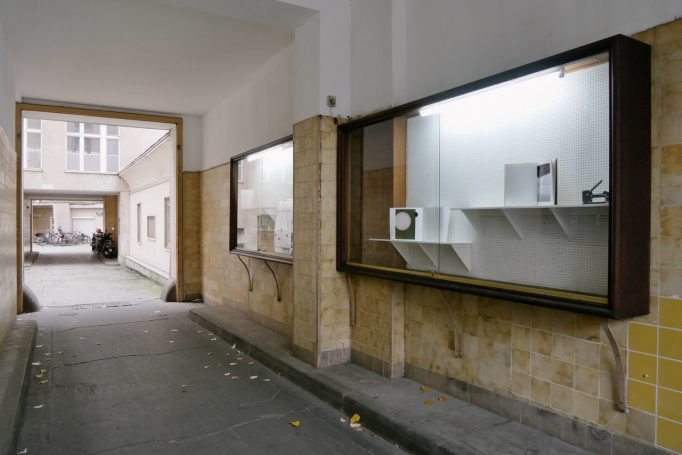
Vitrine installation at Motto Books courtyard & passage
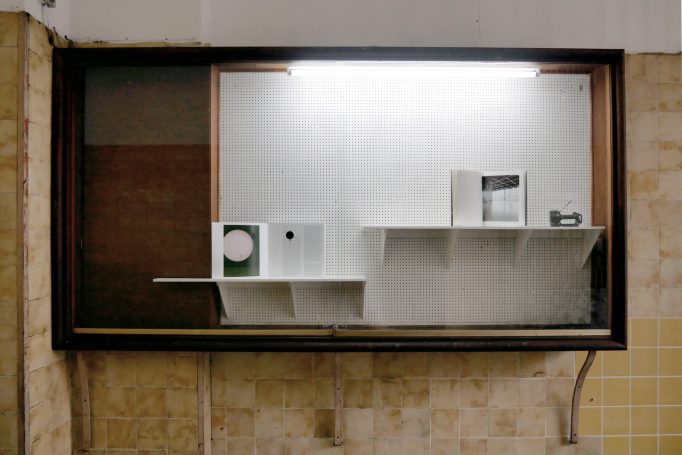
Vitrine installation at Motto Books courtyard & passage
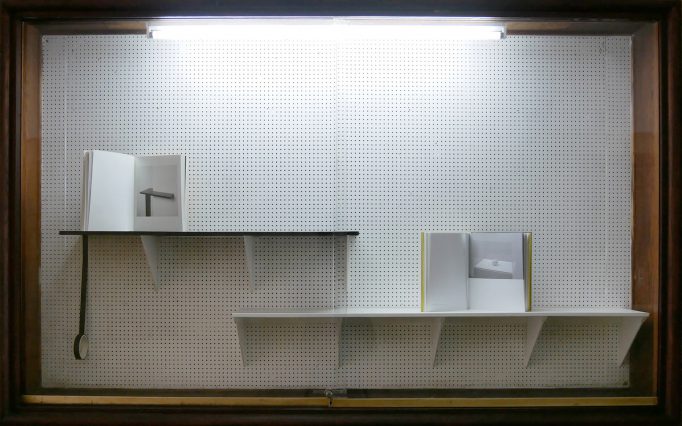
Vitrine installation at Motto Books courtyard & passage
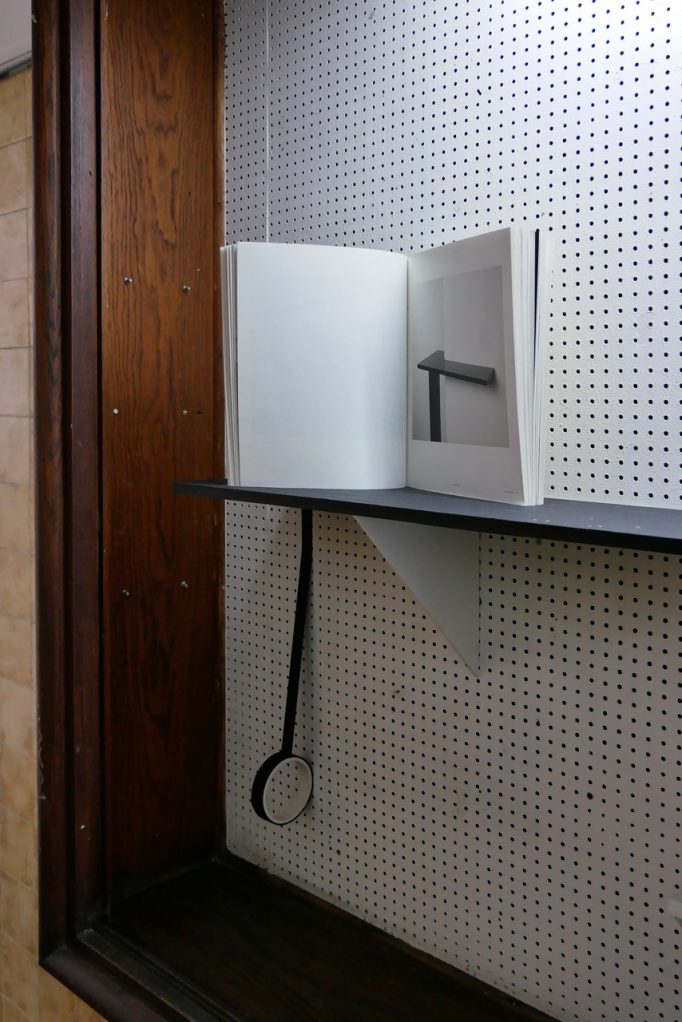
BIBLIOSCULPTURE 101
2020
black shelf, adhesive tape, book
(Michaela Meise – Ding und Körper, Badischer Kunstverein, Verlag der Buchhandlung Walther König, Köln 2012)

BIBLIOSCULPTURE 102
2020
ripped out book page, book
(Sexy and Cool – Minimal goes Emotional, Kunsthalle Tübingen, Kerber Verlag, Bielefeld 2017)

BIBLIOSCULPTURE 102 / Detail
2020
ripped out book page, book
(Sexy and Cool – Minimal goes Emotional, Kunsthalle Tübingen, Kerber Verlag, Bielefeld 2017)
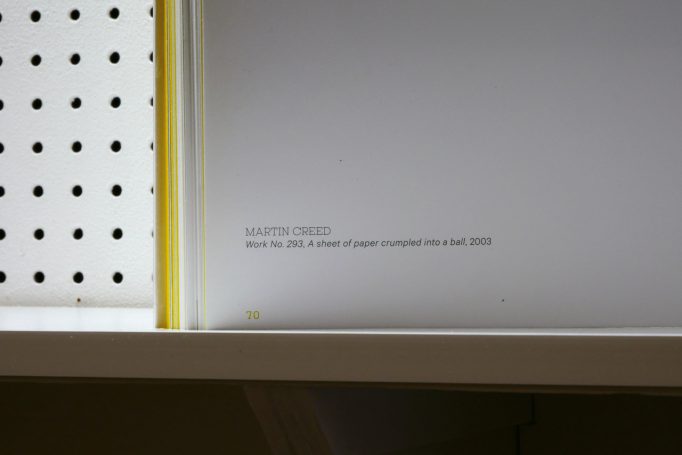
BIBLIOSCULPTURE 102 / Detail
2020
ripped out book page, book
(Sexy and Cool – Minimal goes Emotional, Kunsthalle Tübingen, Kerber Verlag, Bielefeld 2017)
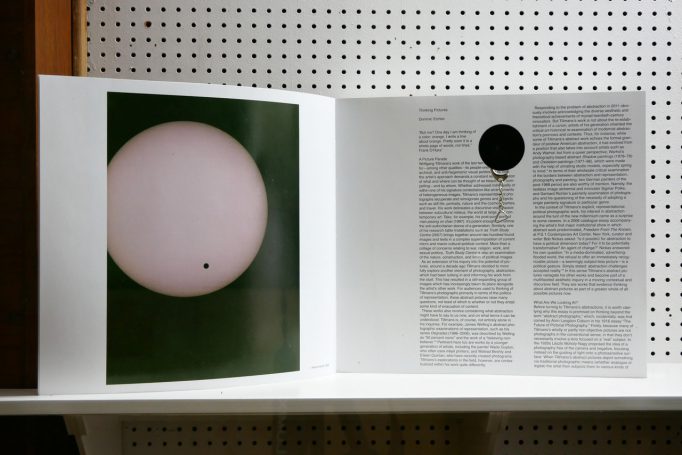
BIBLIOSCULPTURE 103
2020
sucker plug, chain, glass, book
(Wolfgang Tillmans – Abstract Pictures, Hatje Cantz Verlag, Ostfildern 2015)
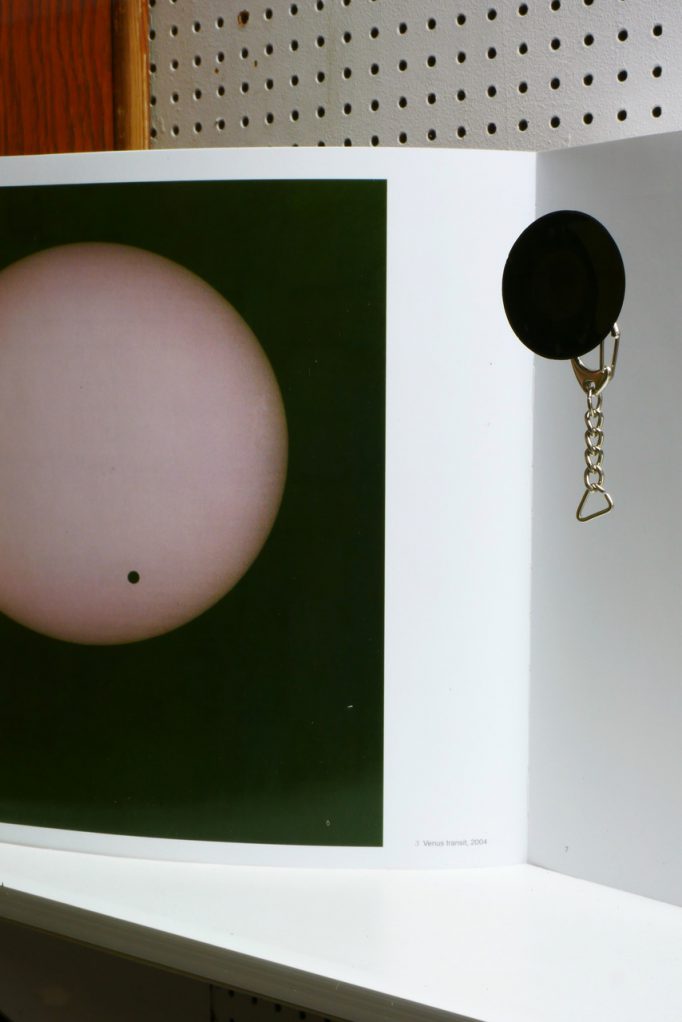
BIBLIOSCULPTURE 103 / Detail
2020
sucker plug, chain, glass, book
(Wolfgang Tillmans – Abstract Pictures, Hatje Cantz Verlag, Ostfildern 2015)
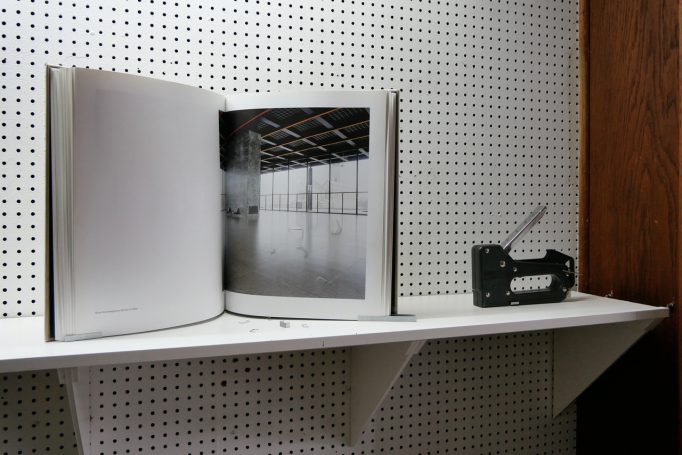
BIBLIOSCULPTURE 104
2020
stapler, staples, magnets, book
(Candida Höfer / Rui Xavier – Silent Spaces, Hrsg. Uta Grosenick u. Herbert Burkert, Distanz Verlag, Berlin 2015)
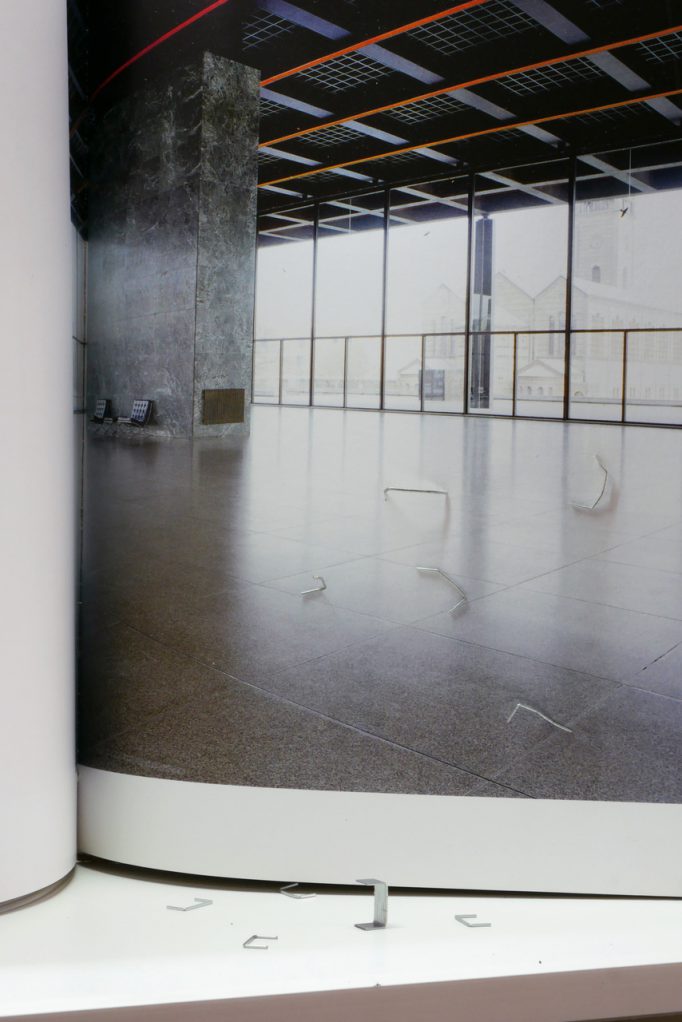
BIBLIOSCULPTURE 104 / Detail
2020
stapler, staples, magnets, book
(Candida Höfer / Rui Xavier – Silent Spaces, Hrsg. Uta Grosenick u. Herbert Burkert, Distanz Verlag, Berlin 2015)
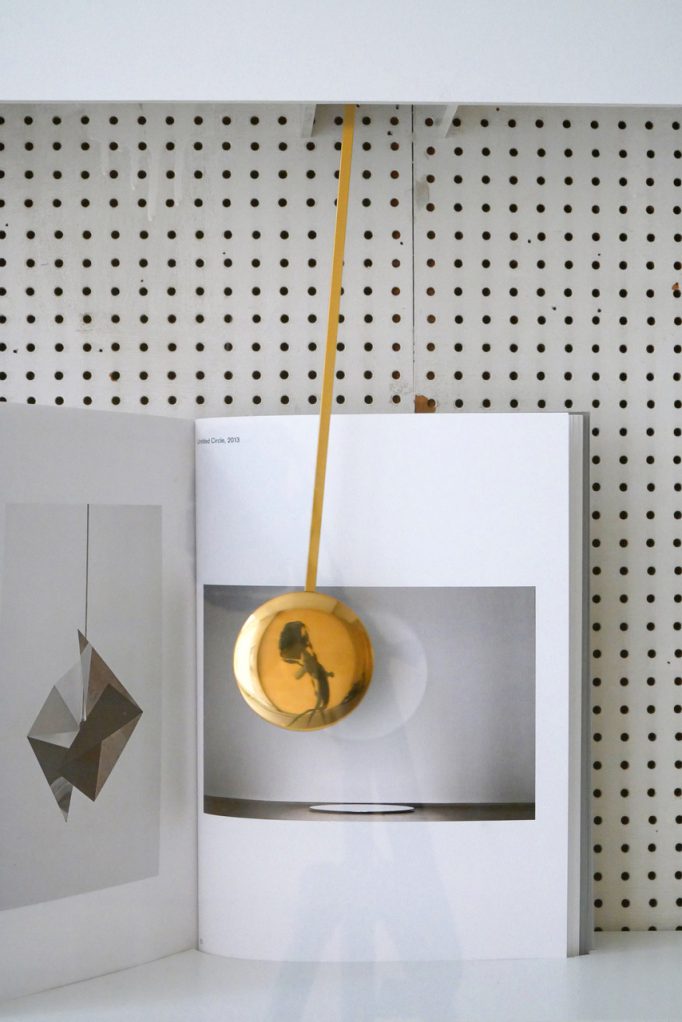
BIBLIOSCULPTURE 105
2020
clockwork, golden pendulum, book
(Germaine Kruip – Works 1999-2017, Oude Kerk, Amsterdam, KW Institute for Contemporary Art, Koenig Books, London 2018)

BIBLIOSCULPTURE 105
2020
clockwork, golden pendulum, book
(Germaine Kruip – Works 1999-2017, Oude Kerk, Amsterdam, KW Institute for Contemporary Art, Koenig Books, London 2018)
Nu Qui Marche
Julien Carreyn
Opening reception: Sept. 8, 2020, from 7pm
Exhibition Sept 9-Oct 19, 2020.
Full vitrines and new publications display.
1. Schlafwandler au Sacré Cœur
2. Une librairie à Berlin
3. Archi_éro_tektonisch
4. Nu qui peint poreux
5. Unexpected joy
6. Pierrette, Pauline et Jacques
7. Ist denn hier ein Schloß?
8. Voyage tumultueux
9. Shelves and frames
10. Winzige Bilder
11. Tu te mires
12. Kisten voller Bilder
13. Nu à deux, nu qui lit
14. Das schwarze Auto
15. Lutte de chiots
16. Spielkarten
17. The bathroom was a kitchen
18. Krimi in der Provinz
19. Sofortbilder
20. Amateur
[…]
Notizen: R.Regnery
MOTTO BERLIN
Skalitzer Str. 68, im Hinterhof
10997 Berlin
U1 Schlesiches Tor
Open Monday – Saturday: 12h-20h
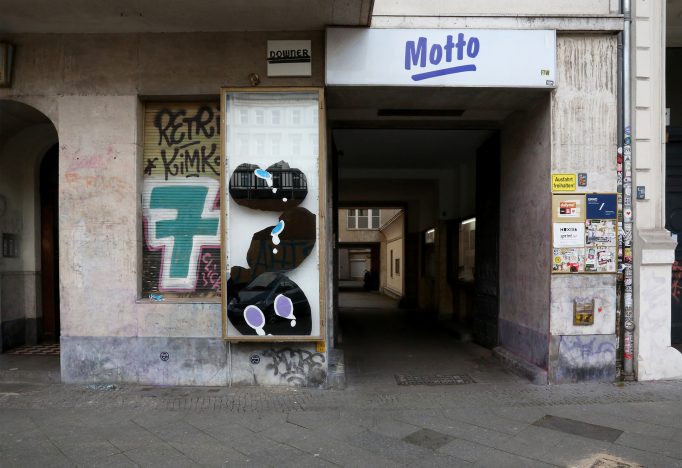
Bertrand Flanet: Pale Habits, 2017, installation view, Reality Companions, Motto Berlin
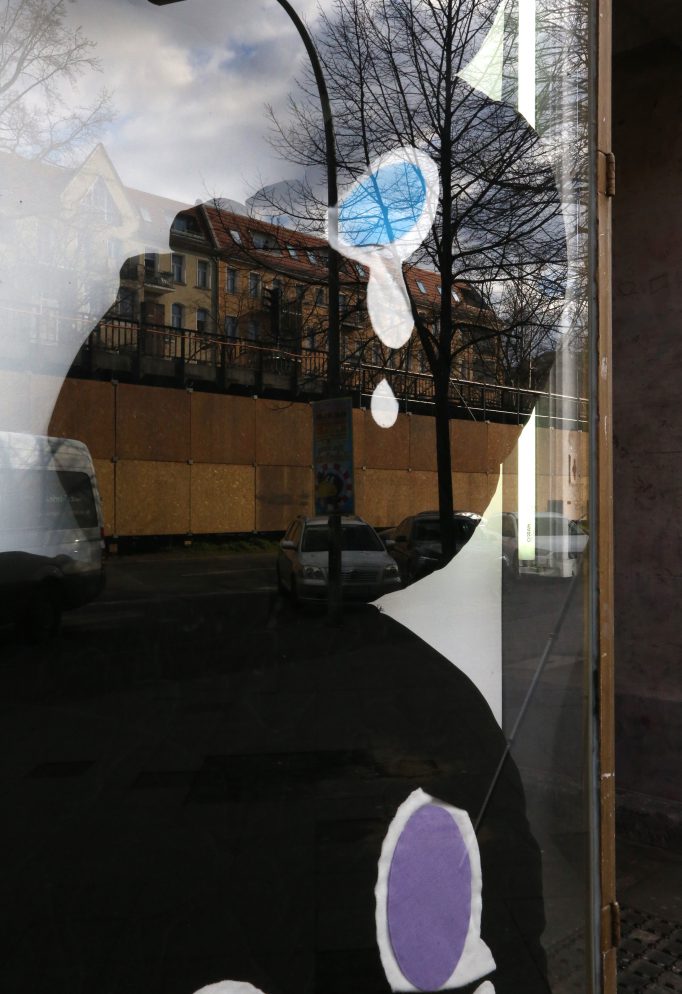
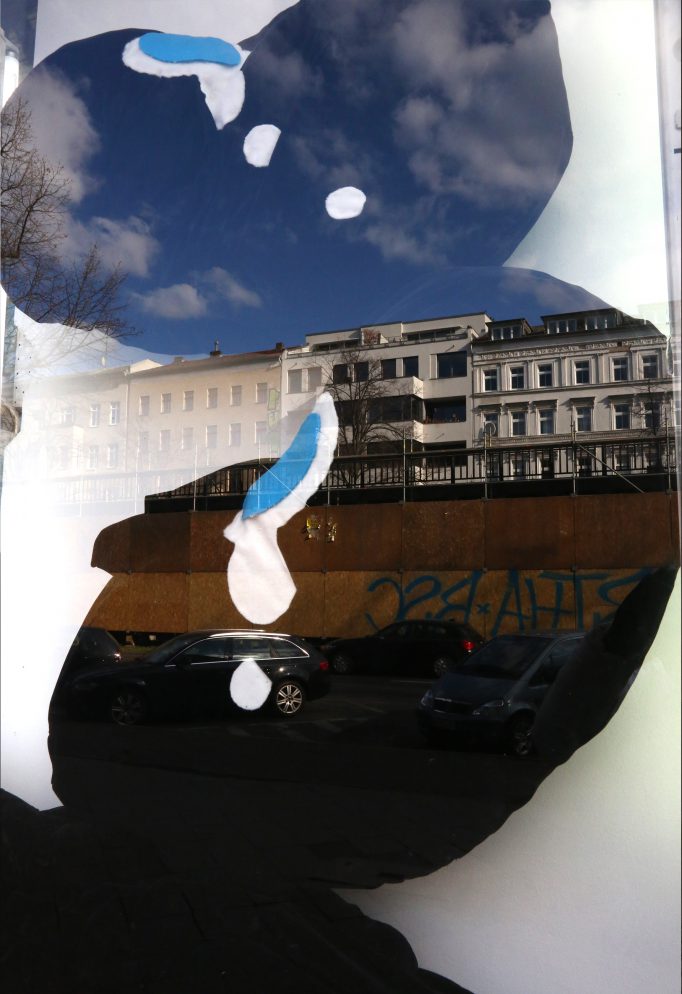
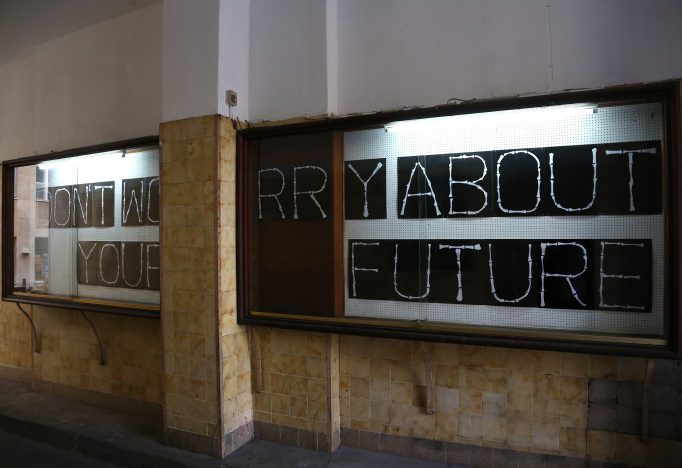
Gina Folly: Don’t worry about your Future, 2020, installation view, Reality Companions, Motto Berlin
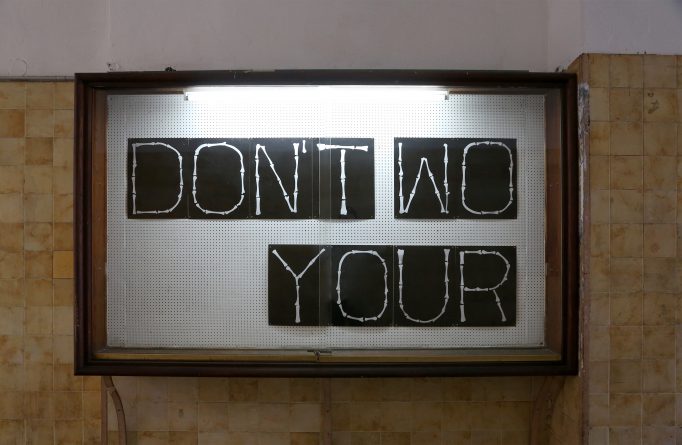

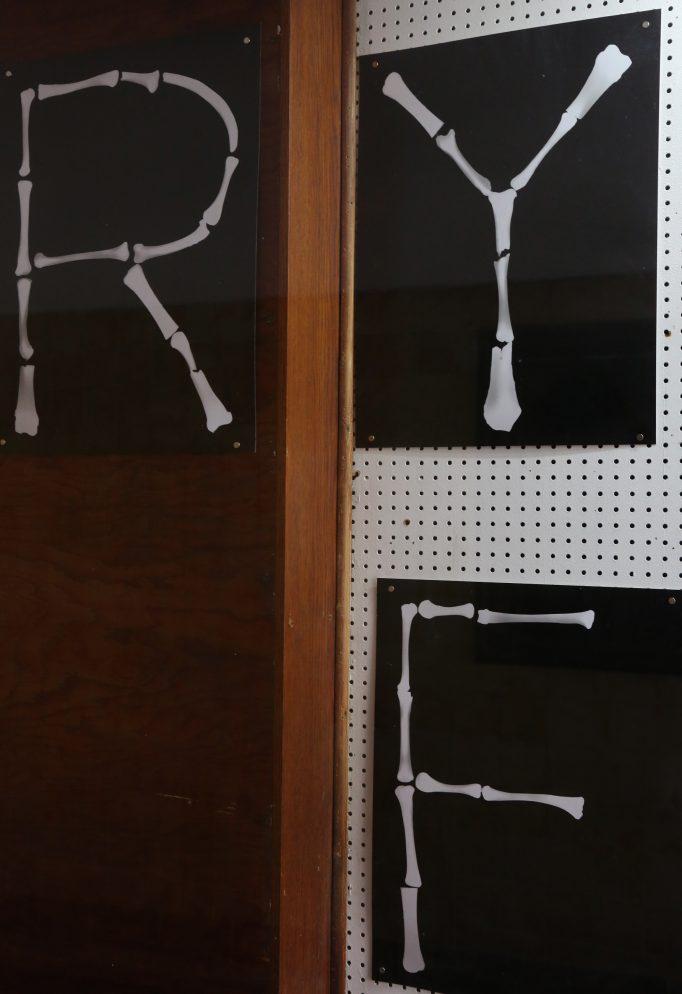
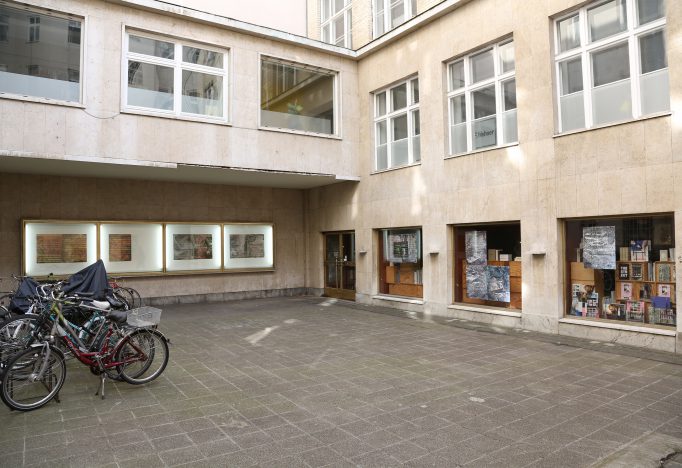
Becket MWN: Seven-Oh-Six, 2015, installation view, Reality Companions, Motto Berlin
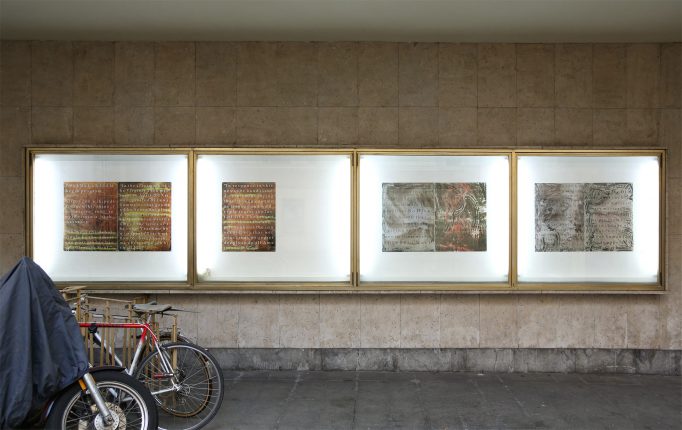
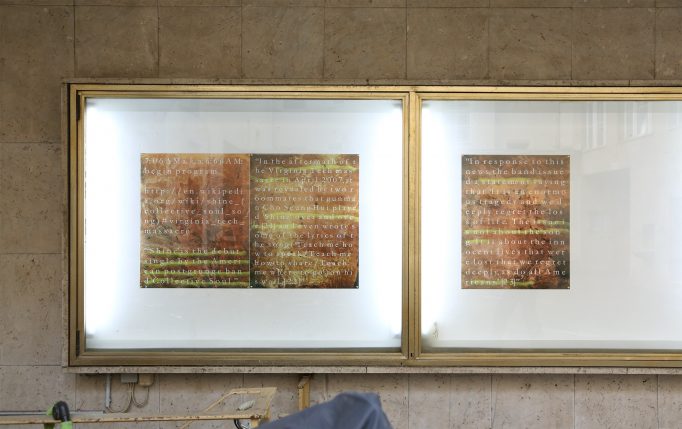
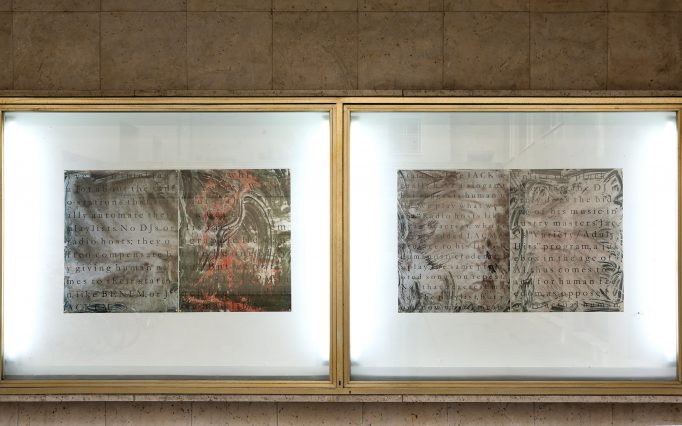
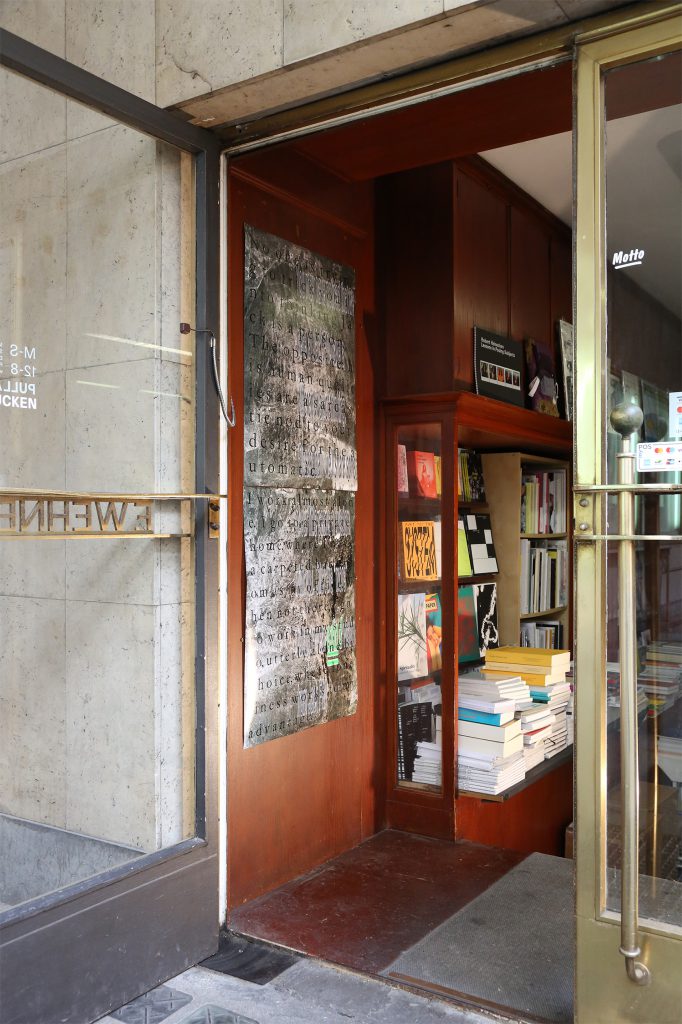
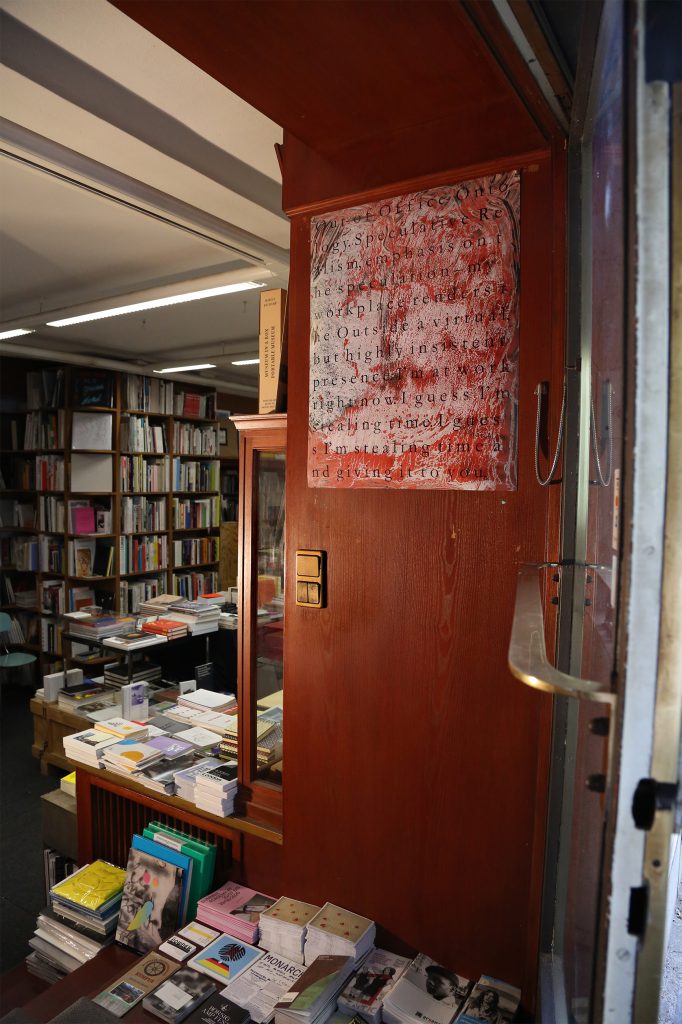
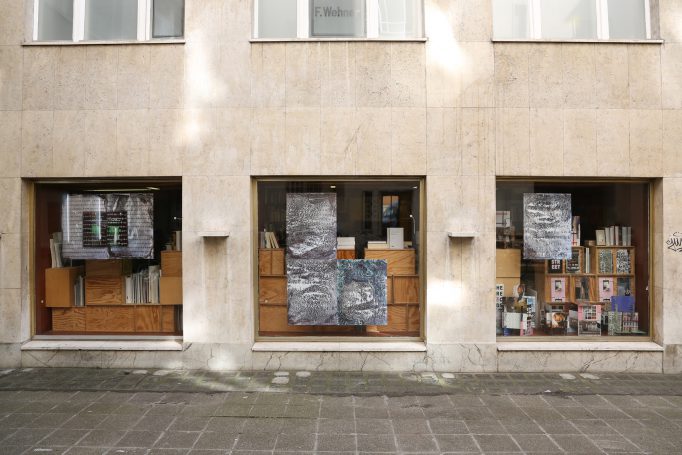
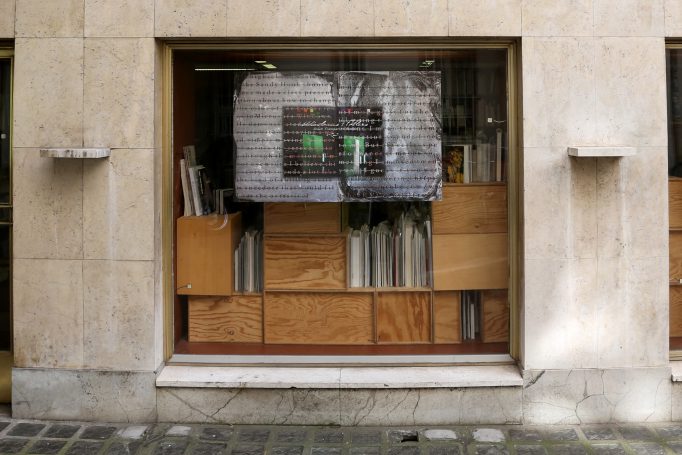
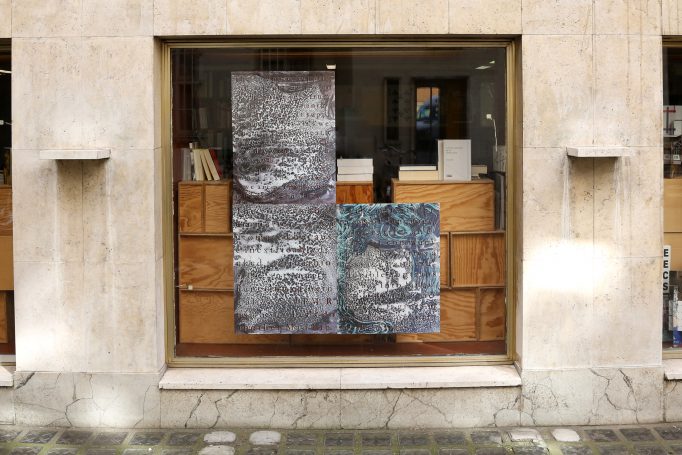
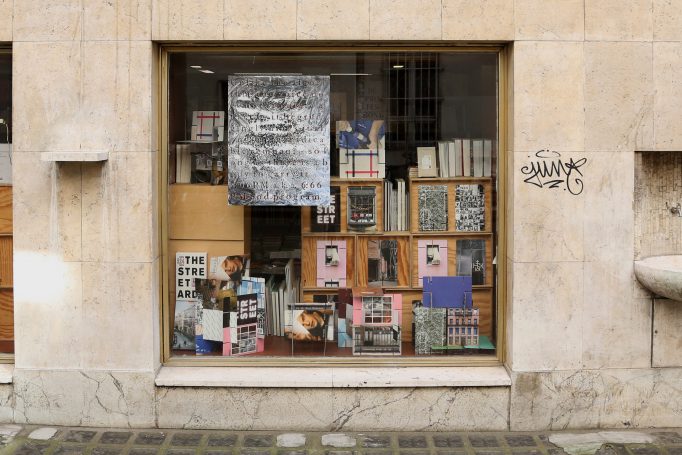
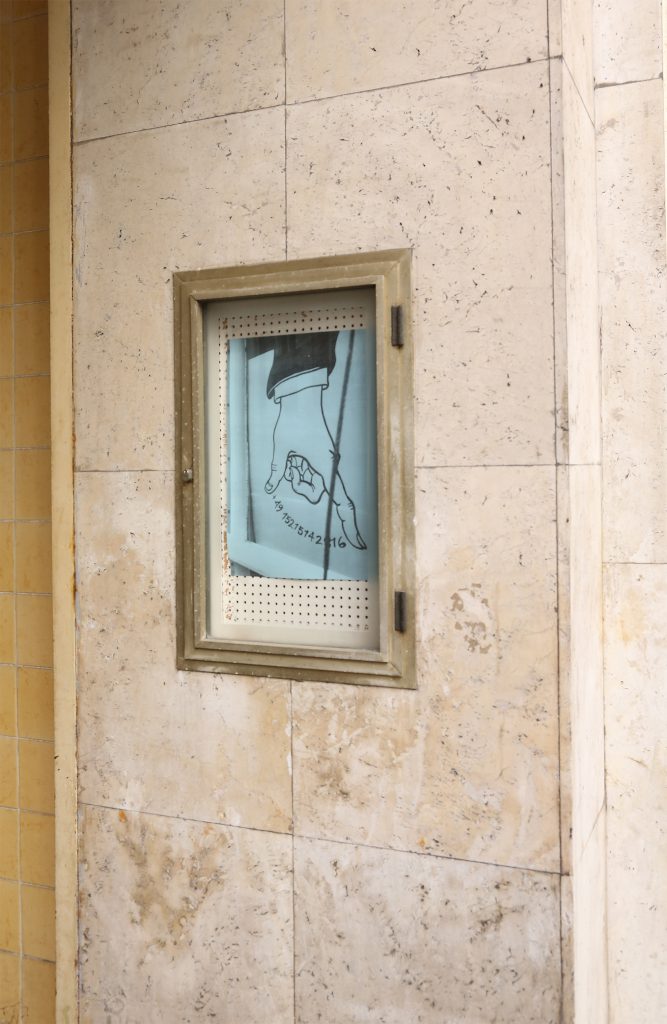
Inga Danysz & Becket MWN: +4915215142816, 2020, installation view, Reality Companions, Motto Berlin
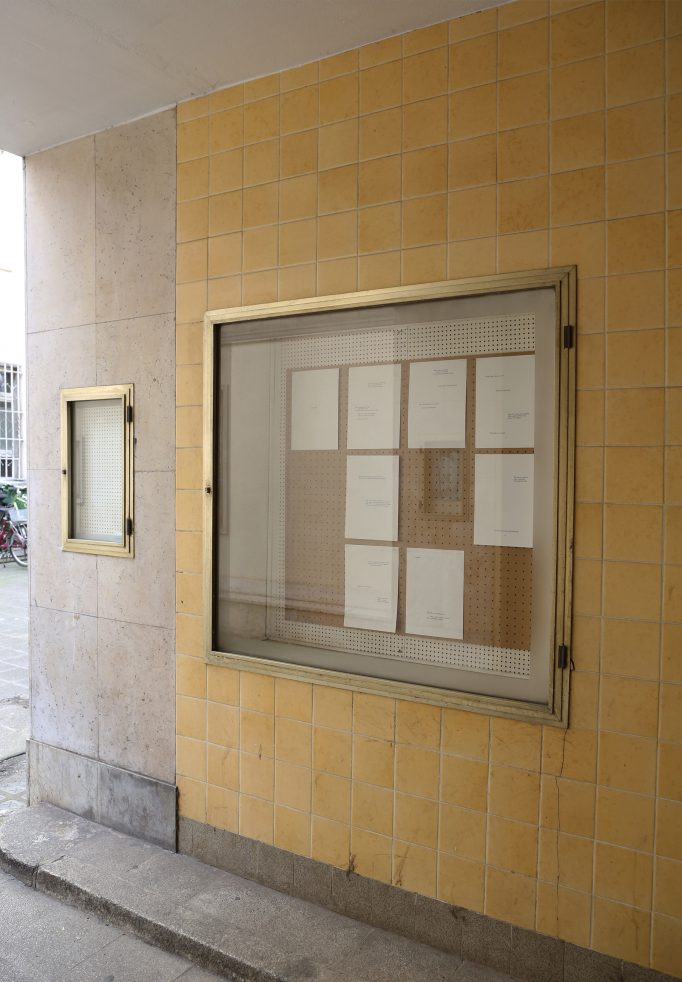
Inga Danysz: The End is always at the Beginning, 2019, installation view, Reality Companions, Motto Berlin
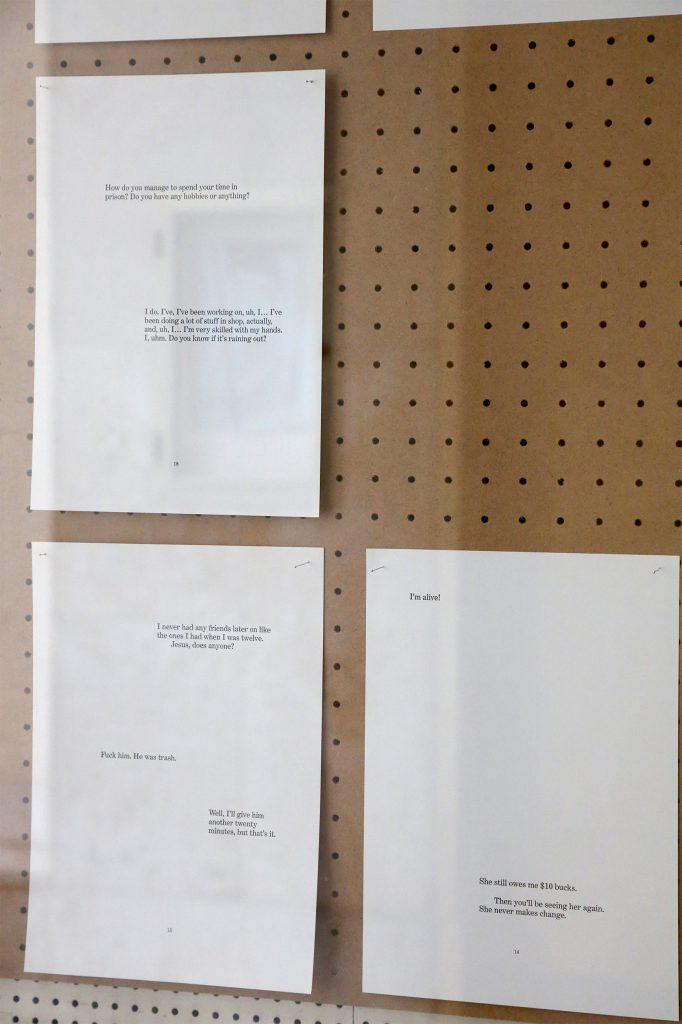
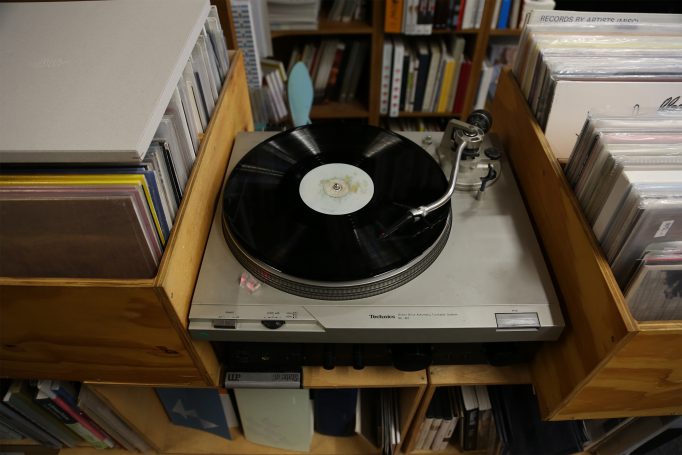
Inga Danysz: Untitled, 2019, installation view, Reality Companions, Motto Berlin
Photos: Yudith Heinemann
Reality Companions
Feb 21 – April 30, 2020
Motto Books Berlin
with works by Inga Danysz, Bertrand Flanet, Gina Folly, Becket MWN
curated by Dennis Brzek
In 2002, German car manufacturer VW opened their so called “Gläserne Manufaktur” (meaning both glassy and transparent factory) as a simulacrum for granting an undisturbed view into its production processes. The glass factory’s promise of full transparency is enmeshed in an array of showcases devoid of human activity, in which tasks are performed for an audience solely by an interplay of automatic gestures. Leading the viewer’s eye from the assembly of individual parts towards the wholeness of the finished product, their performance is—next to government apologias of stability, craft, and expertise—a testament to its belief in a scratch-free experience by way of steering the mechanical arms in safe distance from the glass surface. The luminous airspace lying in between the machinic extremities and their transparent cube is a border of the mind being kept firmly monosemantic.
Fast forward a few years and we are at Elon Musk’s presentation for the Cybertruck, a bulky desert buggy clad in a retro-futuristic shell including dramatically blacked out windows made from the company’s certified armor glass. This product showcase is made out to become the prime denominator for innovation, all the while being drenched in an upside-down baroque aesthetic of all things black and shiny. About half way into the spectacle, lead designer-cum-stage assistant Franz von Holzhausen hurls a metal ball into the truck’s hushed glass outlooks for demonstration of their promised permanence in the face of force. The ball hits and makes the glass crack. A dull thud serenades this banal action, framed underneath bright spotlights and the audience’s chuckled gasps and awkward laughters. In the moment of collision, the ball created a suspended drawing mapping its own meteoritic field of impact located somewhere within the thick outer sheet of the transparent metal. The lines of destruction that were drawn by the unfortunate performer create a spiderweb that becomes a gothic prop in this story’s haunted narrative. The signature left by the metal ball is both concrete and abstract, sketching a caricature of the visual organization of our present where what cracks is never the glass but only its very before. Famously, the only things that ever hits the view of those hyper valued subjects hidden behind bulletproof glass are the raw eggs thrown by protestors trying to make a pointed take, mostly in vain.
SUPERBEE SPIX COLA 139 KOOL GUY CRAZY CROSS 136 DUKE SPRIT SUPERKOOL KOOLKILLER ACE VIPERE SPIDER EDDIE KOLA are only some of the protagonists mentioned in Jean Baudrillard’s vision of New York of the 1970s in his essay “Kool killer ou l’insurrection par les signes” published in 1976. Here, the neurotically semiotic French philosopher describes the city as a vessel for signs and graffiti, abundant signifiers and empty words. The plane of production of these symbols is not just walls of buildings and underground stations but also the more irreducible surface of windows. Today, these scratchings seem to hover in between layers of glass, making them appear suspended in time and place like intractable and incomprehensible signs of another age. Workers who will travel to Grünheide in Brandenburg via S-Bahn for their shifts at Tesla’s Gigafactory 4 will see those engravings and believe them to be hieroglyphs of a time in which semantics were something created instead of endured.
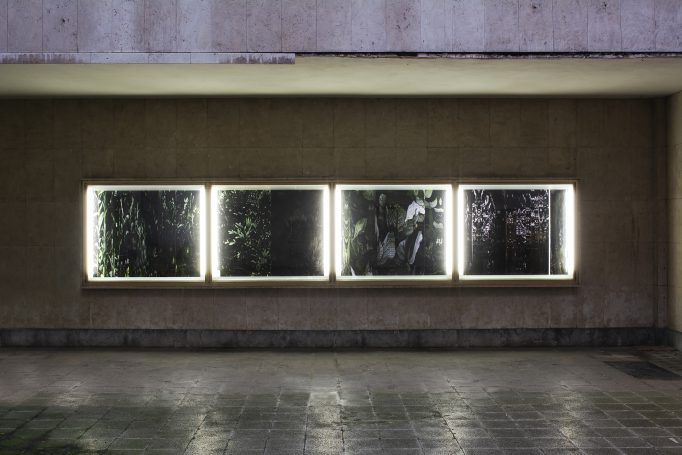
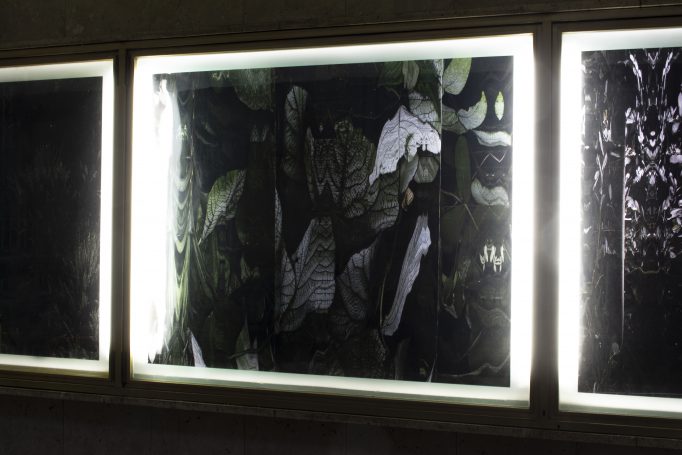
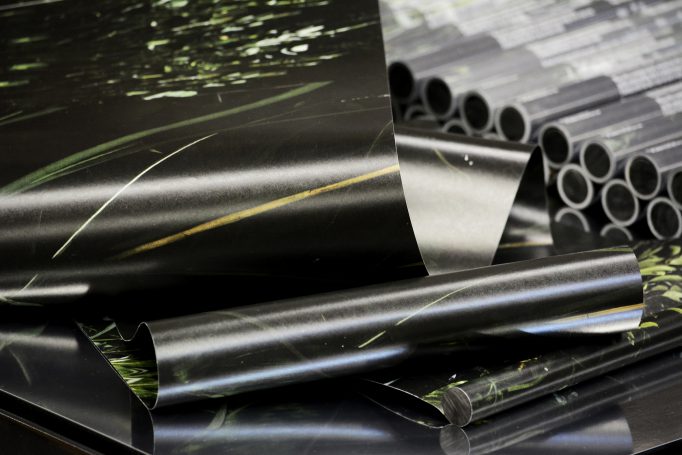
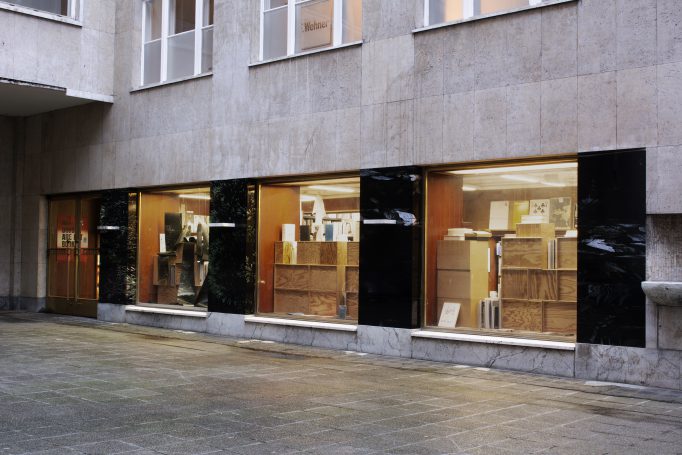
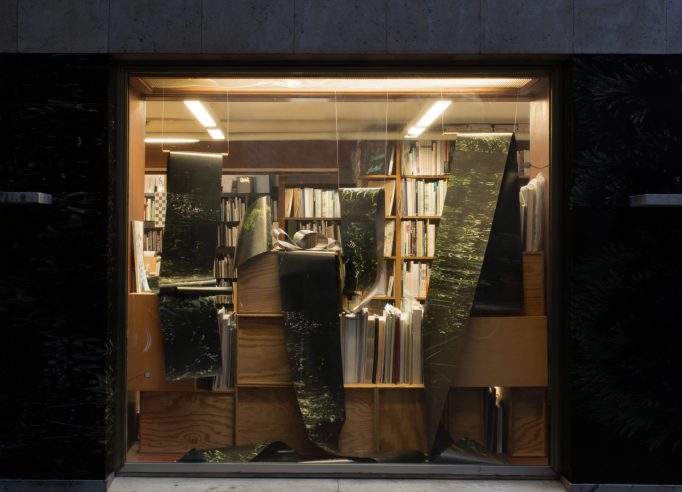
Criminal Garden
Hiroshi Takizawa at Motto Berlin
Criminal Garden
Project01: “Assumption”
Criminal profiling is used as an investigation technique to hypothesize on a suspect figure. An assumed portrait is inferred and emerges from what is left of a particular setting or crime scene. I am intrigued by the development of such assumed figures, as well as the fact that these profiles are fictional and nonexistent unless replaced by an asserted criminal.
“Assumption” consists of scanned images of objects found in ordinary surroundings. Instead of shooting or scanning a flat surface, I chose to scan objects with uneven surfaces as a method to emphasize the distortion of the outcome. As a result, the images are highly detailed, yet far from the objects’ original shapes and forms. The method also allows me to illustrate that the process of reproduction can result in a fictitious representation of an object. To me, there is a similarity in the process of profiling and scanning in the sense that both processes creates a fictional and imaginary image. In this work, I aim create an image of a fictitious profile, although there may not be any criminal context to it. What interests me is that the scanned objects gain a fictional character that reveals the possibility of an additional dimension to its existence, and furthermore, a suggestion that the fictional existence is in fact closer to reality.
Claude Eigan. Alpina Huus x Motto
17 August, 6-10pm
In collaboration with Alizee Lenox and Jake Kent
A special cocktail will be served
Claude Eigan (b. 1983, France) uses sculpture as a primary medium, often extending to installation, sound and print. Recent exhibitions include: Haptic House (Horse & Pony Fine Arts, Berlin, 2018),Everytime you switch me off, I die. A little. (gallery Foothold, Polignano a Mare, 2018), Sun Sipping Some Syrup (gallery Frontviews, Berlin, 2018), Times New Romantic (M.I/mi1glissé, Berlin, 2017), State of the art (gallery Lily Robert, Paris, 2017), Meatspace (The impossible project, Berlin, 2016), Comfort Zone (Kunstfabrik HB55, Berlin, 2016).
* * *
Alpina Huus x Motto
10 August—7 September 2018
Adam Fearon, 10 August, 6-10pm
Claude Eigan, 17 August, 6-10pm
Tarik Hayward, 24 August, 6-10pm
Nastasia Meyrat, 31 August, 6-10pm
* * *
This project is curated by Elise Lammer and kindly supported by Pro Helvetia the Swiss Arts Council, Motto and Domus Alpina